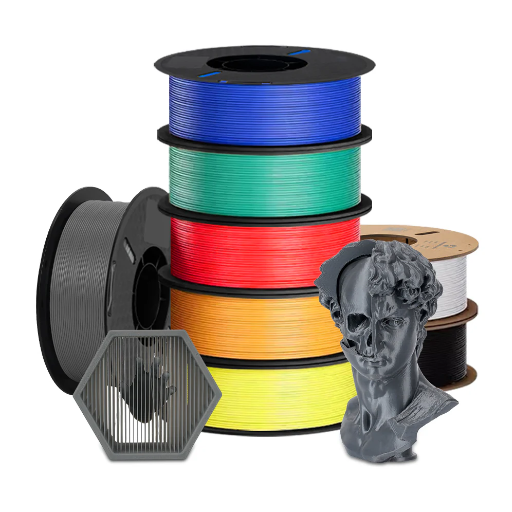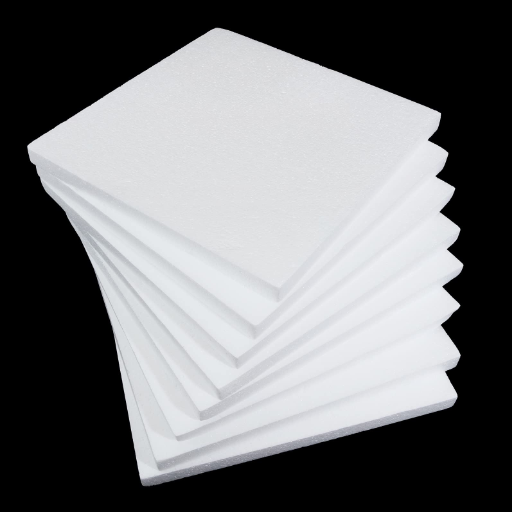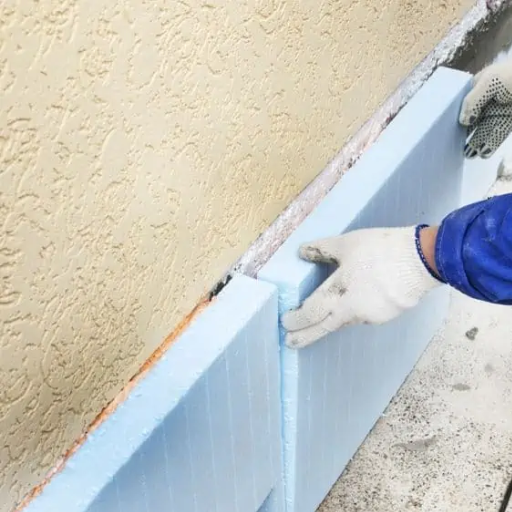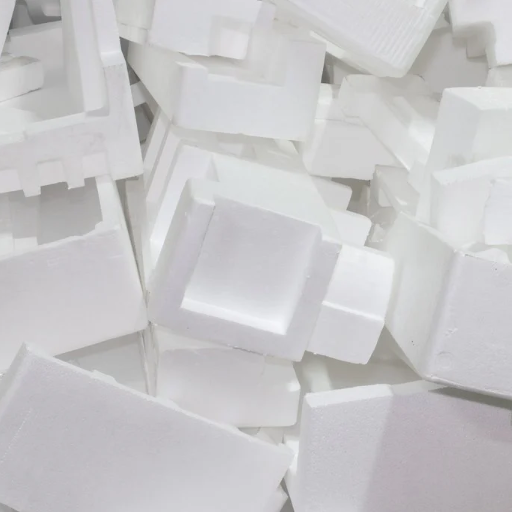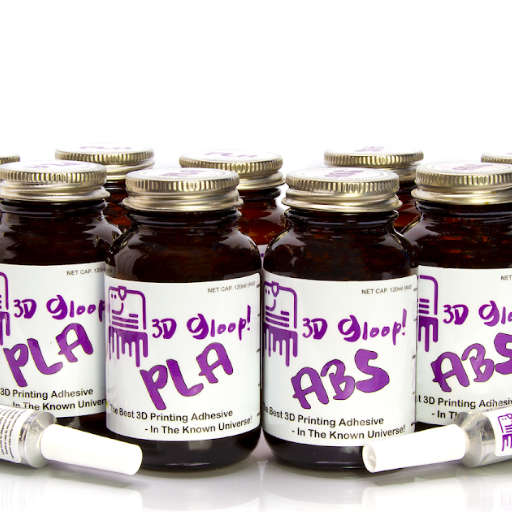When it comes to tackling repairs or crafting projects, having the right adhesive can make all the difference. Gorilla Glue and Loctite are two of the most recognized brands in the world of super glue, each offering a range of products designed to meet a variety of needs. But how do they stack up against each other, and which one is the best choice for your specific requirements?
This article dives into a comprehensive comparison of Gorilla Glue and Loctite, examining their strengths, weaknesses, and key features. We will explore their performance across different materials, durability in various conditions, ease of application, and even factors like price and versatility. By the end, you’ll have a clear understanding of which adhesive stands out as the ultimate champion for your projects. Whether you’re fixing a broken object, bonding tough surfaces, or taking on a creative DIY task, this guide will help you make an informed decision.
What are the key differences between Gorilla Glue and Loctite?

Gorilla Glue and Loctite differ in their composition, application, and ideal use cases. Gorilla Glue is a polyurethane-based adhesive known for its versatility and strong bonding across various materials, including wood, metal, and ceramics. It expands as it cures, making it excellent for filling gaps but potentially messier to work with. On the other hand, Loctite offers a range of adhesives, with super glue being one of its most popular options. Loctite super glue is cyanoacrylate-based, ideal for precise applications and quick-setting bonds on smaller surfaces like plastic, rubber, or glass. While Gorilla Glue excels in creating durable, weather-resistant bonds for heavy-duty projects, Loctite is favored for its ease of use and fast-setting properties in delicate or detail-oriented tasks.
Comparing product features and formulations
When comparing the features and formulations of Gorilla Glue and Loctite, several key distinctions emerge that make them suitable for different purposes. Gorilla Glue is polyurethane-based, making it highly versatile and capable of bonding a wide variety of materials such as wood, metal, foam, glass, and stone. Its remarkable expansion during curing ensures strong, gap-filling bonds, but this also requires careful application to avoid excess mess. Additionally, Gorilla Glue is water-resistant and durable, making it ideal for outdoor or heavy-duty projects.
Loctite, in contrast, primarily employs cyanoacrylate formulations in its super glue products, which are well-known for their rapid bonding time and pinpoint precision. Loctite adhesives are typically best for smaller-scale applications on materials like plastic, rubber, and ceramics. Their non-expanding nature makes them cleaner and easier to use for detailed tasks. Loctite formulations also vary widely to cater to specific requirements, such as moisture resistance, impact strength, and flexibility, ensuring more targeted solutions for intricate repairs.
Ultimately, Gorilla Glue’s robust adhesion and versatility are unmatched for larger, enduring bonds, while Loctite focuses on speed, control, and tailored performance for finer work. Choosing between the two depends primarily on the project’s scale, materials involved, and working conditions.
Adhesive strength and bonding capabilities
When comparing adhesive strength and bonding capabilities, Gorilla Glue is renowned for its high bonding power on a variety of surfaces, including wood, metal, stone, and ceramic. It provides an exceptionally strong and durable bond, especially for heavy-duty applications, due to its polyurethane formula that expands as it cures, filling gaps and creating a robust hold.
On the other hand, Loctite is often preferred for tasks requiring precision. Its cyanoacrylate-based formulations deliver rapid bonding and are especially effective on smaller surfaces or intricate repairs, such as plastic or small metal components. Loctite’s specialized adhesives, like the Loctite Ultra Gel Control, offer resistance to impact, vibration, and environmental stress while maintaining control during application.
Ultimately, Gorilla Glue excels for projects demanding immense structural strength and versatility, while Loctite shines in detailed tasks with its precision and quick curing properties.
Versatility across different materials
Both Gorilla Glue and Loctite excel in bonding a variety of materials, making them highly versatile adhesives for distinct applications. Gorilla Glue stands out for its ability to adhere to wood, metal, stone, glass, ceramic, foam, and more, thanks to its expanding polyurethane formula that fills gaps and ensures a strong hold. On the other hand, Loctite offers exceptional performance on plastics, metals, and rubber due to its cyanoacrylate-based formula, often paired with innovative features like gel consistency for precision on intricate or vertical surfaces. While Gorilla Glue is ideal for heavy-duty tasks involving porous and rough materials, Loctite provides unmatched reliability in projects requiring speed, accuracy, and smoother surfaces. Both adhesives cater to a range of needs, underscoring their adaptability across multiple projects.
How do Gorilla Super Glue Gel and Loctite Super Glue perform?

Both Gorilla Super Glue Gel and Loctite Super Glue deliver impressive performance tailored to specific needs. Gorilla Super Glue Gel excels in strength and versatility, making it ideal for challenging repairs on porous or uneven surfaces. Its thicker consistency allows for precise application, even on vertical surfaces. On the other hand, Loctite Super Glue offers exceptional speed and accuracy, bonding smoothly on non-porous surfaces with minimal effort. Both adhesives maintain durability and reliability, ensuring successful results across a wide range of projects.
Gel consistency advantages for vertical applications
Gel-based adhesives, such as Loctite Gel, offer significant advantages when working on vertical surfaces or angled positions. Their thicker consistency prevents dripping or running, allowing for precise application in challenging orientations. This makes gel adhesives ideal for filling gaps and bonding irregular or porous materials. Additionally, they provide enhanced control during application, reducing waste and ensuring a cleaner, more durable finish. Gel adhesives also cure effectively without sagging, ensuring a strong, lasting bond even under gravity’s pull. These qualities make them an excellent choice for complex, multi-surface repairs.
Drying time and bond strength comparison
When comparing adhesives, drying time and bond strength are critical factors. Gel adhesives often set within minutes, offering a convenient option for quick repairs, while their full cure time may take up to 24 hours depending on environmental conditions like temperature and humidity. Traditional liquid adhesives, on the other hand, can have varying drying times, ranging from several minutes to an hour for initial bonding and up to 48 hours for a complete cure.
Regarding bond strength, gel adhesives excel with their robust performance, especially in vertical or uneven applications, where sagging may be an issue for liquid alternatives. However, liquid adhesives often provide excellent strength for smooth, flat surfaces, forming uniform bonds when applied correctly. Ultimately, the choice between the two comes down to the specific requirements of the task, such as the type of material, drying time constraints, and the environmental conditions in which the bond must hold.
Ease of use and precision application
When it comes to ease of use, solid adhesives like glue sticks or tapes are often more straightforward to handle, requiring minimal preparation and tools. They provide mess-free operation, making them ideal for quick fixes or DIY projects where precision isn’t paramount. On the other hand, liquid adhesives like epoxies or cyanoacrylates require more care during application, often involving tools like brushes or applicators to achieve an even bond. However, they excel in precision application, as they can reach crevices and irregular surfaces that solid adhesives may find challenging to adhere to. Carefully selecting the right adhesive based on the task’s complexity and required accuracy ensures a secure and efficient bonding solution.
Which adhesive works best for plastic materials?

When working with plastic materials, the best adhesive often depends on the type of plastic and the nature of the project. Cyanoacrylates, commonly known as super glues, are excellent for rigid plastics and quick fixes due to their strong, fast-setting bonds. For more flexible or high-stress applications, epoxies offer superior durability and resistance. If bonding large surfaces or materials like polyethylene or polypropylene, specialized plastic adhesives or formulations with adhesion promoters are highly effective.
Effectiveness on polyethylene and polypropylene
Polyethylene and polypropylene are challenging plastics to bond due to their low surface energy. Traditional adhesives often struggle to adhere effectively to these materials. However, specialized solutions like polyolefin adhesives, epoxy formulations with adhesion promoters, or cyanoacrylate adhesives paired with surface primers can improve bonding performance. Surface preparation, such as flame treatment, plasma treatment, or sanding, can also increase adhesion by altering the material’s surface properties. Selecting the proper adhesive formulation and pre-treatment method is essential for achieving strong, long-lasting bonds with these plastics.
Bonding strength on different types of plastics
The bonding strength of adhesives varies across different types of plastics due to their diverse chemical structures and surface properties. For high-surface-energy plastics like ABS, polycarbonate, and acrylic, standard adhesives such as epoxies and cyanoacrylates generally work well, forming robust and durable bonds without extensive surface preparation. However, bonding low-surface-energy plastics like polyethylene and polypropylene typically requires specialized solutions, such as using polyolefin adhesives or incorporating primers designed to enhance adhesion. Surface treatments, including corona, plasma, or flame treatment, can further improve bond strength by increasing the material’s surface energy, enabling better interaction with the adhesive.
Recommended products for specific plastic applications
Selecting the right adhesive for plastic bonding is critical for achieving strong, lasting connections. Here are the adhesive products for various plastic applications:
Epoxy Adhesives
Ideal for rigid plastics like PVC and polycarbonate, epoxy adhesives provide excellent chemical resistance and durability. Products like Loctite Epoxy Plastic Bonder are specifically formulated for plastics and deliver high-strength bonds, even under challenging conditions.
Cyanoacrylate Adhesives
For quick, effective bonding of common plastics such as ABS or acrylic, cyanoacrylate adhesives are a dependable choice. Gorilla Super Glue Gel and 3M Scotch-Weld are versatile options that offer a strong bond with minimal surface preparation.
Polyurethane Adhesives
Perfect for bonding flexible plastics, polyurethane adhesives, such as Gorilla Heavy Duty Construction Adhesive, offer high elasticity and can withstand stress without breaking. These adhesives are also suitable for applications where vibration or impact is expected.
Two-Part Acrylic Adhesives
Designed for hard-to-bond plastics like polypropylene or polyethylene, two-part acrylics like 3M Scotch-Weld Structural Plastic Adhesive DP8010 are recommended. When combined with the appropriate primer or surface treatment, they deliver exceptional bonding performance.
By selecting the adhesive that aligns with the plastic type and application requirements, users can ensure optimal results in both industrial and consumer environments.
What are the pros and cons of liquid super glue vs gel formulations?

Liquid Super Glue
Pros: Fast drying time, excellent for bonding smooth, flat surfaces, and provides a strong, durable hold. It’s ideal for filling very fine cracks or joining tightly fitted parts.
Cons: Can be messy to apply due to its thin consistency, and excess glue may drip or spread unintentionally. It is less effective on porous materials as it may absorb too quickly.
Gel Super Glue
Pros: Thicker consistency allows for better control during application, making it ideal for vertical surfaces and uneven or porous materials. It’s less prone to dripping and provides more precision.
Cons: Slightly slower drying time compared to liquid formulations and may not penetrate as deeply into very fine cracks or seams.
Comparing application methods and control
When selecting the right application method for super glue, consider the type of surface, the level of precision needed, and the project’s demands. Liquid super glue is ideal for smooth, non-porous surfaces where it can flow into fine cracks, ensuring a strong bond. However, it can be difficult to control due to its runny consistency. On the other hand, gel super glue offers superior control during application, making it perfect for vertical surfaces, uneven materials, or precise tasks. Its thicker consistency prevents dripping and allows for easier targeting of specific areas. Additionally, gel formulations work better with porous surfaces as they take longer to dry, giving time for optimal absorption. Ultimately, the choice between liquid and gel super glue depends on the project requirements and the precision or material compatibility necessary to achieve the best results.
Drying time and curing process differences
The drying time of super glue typically ranges from a few seconds to a couple of minutes, depending on the type of glue and environmental factors such as humidity and temperature. Gel-based super glues may take slightly longer to set due to their thicker formulation. The curing process, which is the time required for the adhesive to reach its maximum strength, often takes 24 hours. During curing, the glue creates strong bonds by reacting with the moisture in the air or on the material’s surface. To achieve the fastest and most effective results, ensure the surfaces are clean, dry, and properly aligned before application.
Suitability for various project types
Super glue is incredibly versatile and suitable for a range of project types, from small household repairs to more intricate craft and DIY tasks. Its strong bonding capabilities make it ideal for fixing materials like metal, plastic, ceramic, wood, and rubber. For delicate items, such as jewelry or glass, super glue excels in providing a seamless and sturdy bond without altering the appearance. Gel-based formulations are particularly handy for vertical surfaces or porous materials, as they resist running and provide a more controlled application. However, for projects exposed to high stress, extreme heat, or water, specialized formulations like waterproof or heat-resistant variants may be necessary.
How do you properly use Gorilla Glue and Loctite adhesives?

Proper Use of Gorilla Glue
To ensure Gorilla Glue performs effectively, start by cleaning and dampening one surface, as the glue requires moisture to activate. Apply a small amount of glue to the other surface — a little goes a long way, as the glue expands while curing. Press the surfaces together tightly and clamp them for at least 1–2 hours. Allow the bond to cure fully for 24 hours for maximum strength. Be cautious to avoid skin contact during application and use gloves if needed.
Proper Use of Loctite Adhesives
When using Loctite adhesives, clean and dry the surfaces thoroughly for a strong bond. Apply a small amount of adhesive evenly to one surface. Depending on the specific variant used, align and press the pieces together immediately or within the recommended open time. Hold or clamp the materials in place as instructed in the product guidelines. Always review the product-specific curing times for optimal results and store the adhesive properly after use to maintain its effectiveness.
Surface preparation and application techniques
Surface preparation is a critical step to ensure a reliable bond when using adhesives. Begin by cleaning the surfaces to remove dust, grease, or contaminants using appropriate cleaners such as isopropyl alcohol or a mild soap solution. Ensure the surfaces are completely dry, as moisture can weaken adhesion. For materials like metals or plastics, lightly sanding the surface can improve bonding by increasing texture.
When applying the adhesive, follow the manufacturer’s instructions carefully. Typically, this involves evenly distributing a small amount of adhesive on one surface and aligning the materials accurately. Depending on the adhesive type, you may need to press the pieces together immediately or wait within the specified open time. Use clamps, weights, or tape to hold the materials securely until the adhesive cures.
Curing times are vital for achieving maximum bond strength. Refer to the product guidelines for the specific curing duration, as some adhesives require longer periods under certain environmental conditions. Proper storage of adhesive, such as keeping it sealed in a cool, dry place, will maintain its effectiveness and usability for future applications.
Clamping and drying recommendations
Effective clamping ensures strong and reliable adhesive bonds. When clamping, use the recommended pressure to evenly distribute force without squeezing out excessive adhesive. Soft woods require gentle clamping to prevent damage, while hardwoods may need stronger pressure. Check the adhesive manufacturer’s guidelines for the ideal clamping time, which typically ranges from 20 minutes to several hours, depending on the type of adhesive used.
For drying, ensure that the workspace maintains appropriate temperature and humidity levels, as these factors significantly impact curing times. Allow the adhesive to fully cure before applying any stress to the bond, which may take 24 hours or longer for certain products. Always follow the drying and curing instructions provided by the adhesive manufacturer for consistent and durable results.
Safety precautions and cleanup methods
When engaging with any type of adhesive, ensure the work area is properly ventilated to avoid inhaling harmful fumes. In addition to taking general measures, personal protective equipment must also be used, such as gloves and safety goggles, to safeguard from skin and eye contact. Also, do not use open flames or sparks along with flammable adhesives as they present safety risks. Moreover, keep all adhesives out of reach of children and pets.
Adhesive and solvent cleanup can be accomplished by acting on any spills while wet. It is best to remove any excess adhesive promptly while it is still wet with clean rags, making use of cloths or solvents recommended by the manufacturers. Furthermore, hardened adhesives tend to be more difficult to remove from surfaces and may require some scraping or sanding. Remember to clean all tools and surfaces used to maintain a compliant workspace. Finally, do dispose of adhesive waste per local guidelines. Observing these steps will guarantee proper and secure adhesive application.
Which adhesive is best for specific materials and projects?

Selecting adhesives is contextualized by the materials to be used and the project scope. Here are some general suggestions:
Wood: A common type of PVA glue also referred to as wood glue is widely used in bonds wood to wood joints. Apply stronger polyurethane glues for more demanding tasks.
Metal: Use epoxy adhesives for metal bondings. Following surface preparation constructs a good bond. Wash the joint surfaces of any potential contaminants such as dirt and oil.
Plastic: Super glue can be used for small repairs on plastic, while plastic glues or contact cements work better with softer plastics.
Glass and Ceramics: Epoxy glues or silicone adhesives work well with glass and ceramics. They are also clear judicious and water-resistant adhesives.
Fabric or Leather: A fabric glue or a spray adhesive fulfills both strength and flexibility criteria while providing the required bond.
Always make sure that the adhesive will be used on a small and less visible area beforehand and follow instructions from the manufacturer. In specifics, consider restrictions stipulating temperature, weight, and exposure to the elements.
Recommendations for wood, metal, and fabric
Wood: For wood projects, wood glue is typically the best option, offering a strong and lasting bond as the glue actually soaks into the wood fibers. For outdoor or high-moisture environments, consider using polyurethane glue for its water resistance and durability. Clamping is often recommended to achieve the strongest adhesion.
Metal: Bonding metal requires adhesives like epoxy glue or cyanoacrylate glue, which provide excellent strength and heat resistance. For industrial or heavy-duty applications, a two-part epoxy is ideal. Ensure that surfaces are clean and sanded for a secure bond.
Fabric: For attaching fabrics or combining fabric with other materials, fabric-specific glue works best, ensuring flexible and washable results. Spray adhesives are also popular for crafting or temporary fixes, offering easy application and minimal mess. Always allow glue to dry completely for long-lasting adhesion.
Choosing the right product for household repairs
Selecting the ideal product for household repairs depends on the type of material, the nature of the repair, and the environmental conditions. For wood repairs, epoxy resin or wood glue is often the best choice due to its strong bond and resistance to stress. When fixing items like ceramics or glass, opt for fast-setting epoxy or super glue, both of which dry clear and provide durable adhesion. For metal fixes, use a two-part metal epoxy or specialty adhesives designed to withstand high temperatures and corrosion.
For plumbing repairs, such as leaks or broken pipes, waterproof silicone sealant or epoxy putty is highly effective, as these materials are designed to remain intact under constant water exposure. When dealing with plastic materials, identify if the plastic is rigid or flexible. For rigid plastics, a cyanoacrylate adhesive or plastic-specific epoxy works well, while flexible plastics may require a specialized plastic adhesive.
Always assess the durability requirements and whether the repair will be exposed to temperature extremes, moisture, or heavy wear. Additionally, reviewing manufacturer instructions for proper application can significantly enhance the success and longevity of your repairs.
Best options for crafting and DIY projects
When it comes to crafting and DIY projects, selecting the appropriate adhesive is crucial for achieving strong, clean, and durable results. For paper and cardstock, materials like glue sticks, tacky glue, or rubber cement provide clean applications and dry quickly. If you’re working with wood projects, wood glue is the best option due to its strong bonding properties and compatibility with sanding and staining once cured. For fabric-related crafts, fabric glue or fusible web provides flexible and washable bonds, ensuring durability in wearable or decorative items. For mixed media projects involving multiple materials such as glass, metal, or ceramics, epoxy resin is an ideal choice due to its exceptional strength and clear finish.
References
Frequently Asked Questions (FAQ)
Q: What are the main differences between Gorilla Glue and Loctite Super Glue?
A: Gorilla Glue and Loctite Super Glue differ primarily in their formulations and intended uses. Gorilla Glue is known for its strong and fast bonding, often forming long-lasting repairs in an instant. It is also available in a gel form, which is a thicker formula that prevents the glue from drying too quickly. Loctite, on the other hand, offers a super glue liquid that is clear and dries within 10-45 seconds, providing a quick fix for various materials.
Q: Is Gorilla Glue or Loctite better for using super glue on polyethylene or polypropylene plastic?
A: Both Gorilla Glue and Loctite have products that can be used on a variety of surfaces, but neither is specifically recommended for use on polyethylene or polypropylene plastic. It is best to look for adhesives specifically designed for these materials, as standard super glue may not bond effectively.
Q: Which glue is more suitable for gel super glue applications?
A: For gel super glue applications, Gorilla Glue offers a gorilla gel formulation that is excellent for vertical surfaces and non-drip applications. This glue gel is a thicker option, which helps prevent the glue from drying too quickly and provides more control during application.
Q: How does the drying time of Gorilla Glue compare to Loctite Super Glue?
A: Gorilla Glue typically forms a strong bond within a few seconds, with the glue drying in about 10-45 seconds, depending on the specific product and conditions. Loctite Super Glue also dries quickly, with most clear glue drying times similar to Gorilla Glue. Both are effective for quick fixes.
Q: Can Gorilla Glue and Loctite be used for outdoor projects?
A: Yes, both Gorilla Glue and Loctite offer products that are suitable for outdoor use. Gorilla Glue is known for its water-resistant properties, making it a reliable choice for outdoor projects. Loctite also provides weather-resistant options, ensuring durability in various conditions.
Q: What is the best glue for use on porous materials?
A: Gorilla Glue is often preferred for porous materials due to its expanding nature, which fills gaps and creates strong bonds. It is particularly effective for wood and other porous surfaces. Loctite also offers suitable options, but Gorilla Glue may be the best glue for these specific needs.
Q: How can I prevent my super glue from drying out prematurely?
A: To prevent super glue from drying out prematurely, store it in a cool, dry place with the cap tightly sealed. Both Gorilla Glue and Loctite offer products with control gel applicators that help minimize exposure to air, prolonging the life of the glue.
Q: Are there specific projects where one should prefer the Gorilla Glue over Loctite, or vice versa?
A: Gorilla Glue is often preferred for projects requiring strong, gap-filling bonds, such as woodworking or heavy-duty repairs. Loctite is ideal for precision tasks and quick repairs where a clear bond is necessary. The choice depends on the specific requirements of your project.
Q: Is the super glue from Gorilla or Loctite toxic?
A: Both Gorilla Glue and Loctite Super Glue can be irritating to the skin and eyes, and it’s important to use them in well-ventilated areas to avoid inhaling fumes. Always follow the manufacturer’s instructions and safety guidelines to ensure safe use.
















